Do you know the “acceptable” ways to get to Santiago and obtain the Compostela? On foot, on horseback, by bike. Well done! 👍 But what do you know about the more unusual ways to get to Santiago?
These days, it’s possible to do your pilgrimage in surprising ways! Some of them were born from the recent popularity of the Camino and will undoubtedly raise a few eyebrows… Others are rooted in History and the Jacobean traditions despite their unusual features for nowadays pilgrims.
In this post, let’s discover some surprising ways to get to Santiago! 😀
1. Camino de… St James
Let’s start slowly, with some “unusual” anchored in History. To do that, let’s head to Ireland and the UK!
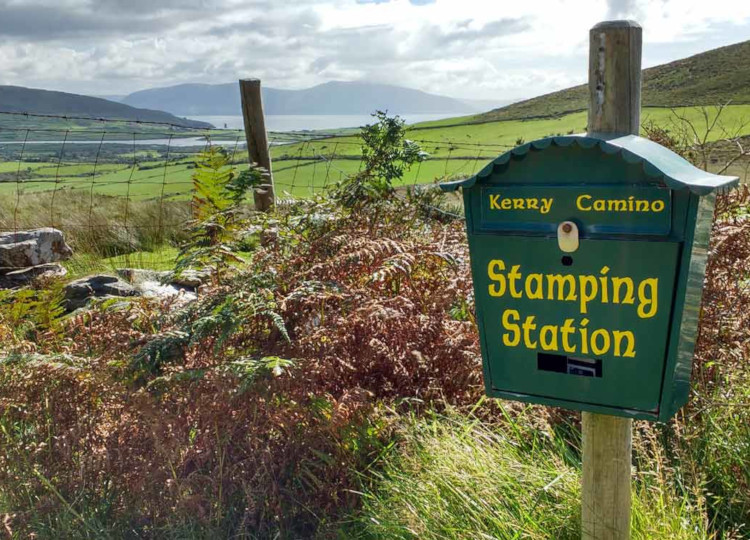
Photo: The Dingle Gate Hostel
But let’s stop on a small galician Camino first… The Camino Inglés is inspired by the route pilgrims from the British Isles and Northern Europe used to take to get to Santiago. After crossing the seas, they arrived in Galicia to continue and complete their pilgrimage on land. Today, pilgrims can still travel this Camino from A Coruña or Ferrol, at respectively ~75km and ~115km from Santiago.
With the modern obligation to travel at least 100km to obtain the Compostela, pilgrims have no other choice than to start from Ferrol, even though this port was not prevalent in the past… This observation has led Irish and British pilgrims to ask for an exception to the “100km” rule.
In 2017, the Cathedral agreed that pilgrims could leave from A Coruña and receive the Compostela, provided that they would have first covered the remaining 25km in their country (and be able to prove it)
This is how the Celtic Camino was born! How does it work? The principle is simple: pilgrims walk at least 25km on Irish routes. They can choose to go on a pilgrimage route or a simple hiking trail.
In any case, pilgrims leave with their credential for the Camino de Santiago, which they stamp as they go. At the end of their journey, they contact the Irish Camino Society that validates the start of their pilgrimage and issues them with a certificate of completion, the Celtic Camino Compostela.
The rest is more usual. Pilgrims resume their pilgrimage in A Coruña and take the Camino Inglés until Santiago. There, they can present their Celtic Compostela with their credential at the pilgrim’s office to get the Compostela!
The principle also applies in other countries, such as the UK. In this case, no intermediate validation or Compostela, but the rest is pretty much the same.
Tempted by an Irish or British Camino?
Learn more about it here: Camino Society (Ireland) ~ Confraternity of St James (UK)
2. Camino on water
A floating pilgrimage… Idyllic? Strange? As mentioned earlier, the pilgrimage to Santiago was not necessarily done on land. Many pilgrims made all or part of their journey by sea!
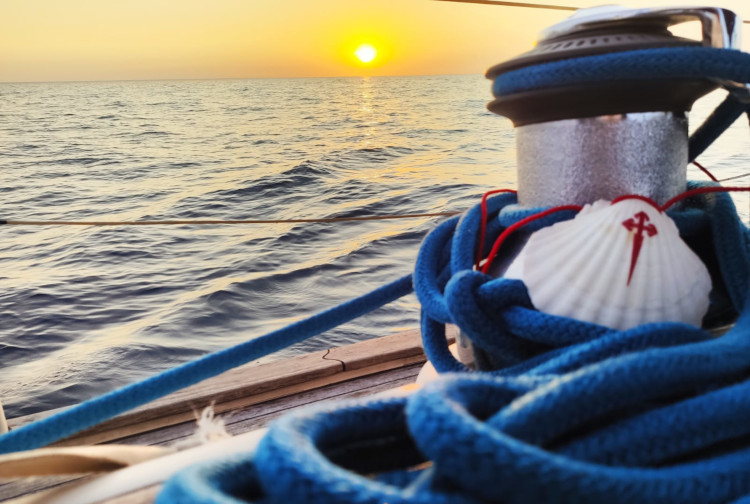
Photo: Navegantes Oceanicos
With this in mind, the Association of Marinas of Northern Spain North Marina worked to revive a maritime route of Santiago. In 2016, the Camino de Santiago do Mar was born. The initiative is supported by Galicia and the Cathedral of Santiago: “sea pilgrims” are considered and welcomed just like “land pilgrims”.
Anyone can complete his or her pilgrimage from one of the twenty ports along the Spanish coast, or even from La Rochelle in France. Like land pilgrims, they carry a credential, which they stamp at every ports where they stop at. To validate their pilgrimage, 2 requirements: complete at least 100 nautical miles (~185km/~115miles) and the last stage on foot.
Want to sail in a group? Every year, North Marina organizes the event Sail the Way – Navega el Camino. The pilgrimage lasts 15 days and brings together about 30 ships. Interested pilgrims simply sign up to join the fleet. No boat? No problem! It’s also possible to sign up to join a crew.
Tempted to sail your Camino ?
Learn more about it here: Sail the Way
3. Camino on water (bis, but sporty version)
Some will tell me that doing the Camino while comfortably kicking back on a boat seriously lacks of physical effort. Of sore muscles, of blisters! For this type of pilgrim, the solution exists. How can they combine maritime pilgrimage and workout? By rowing to Santiago, of course!

Photo: The Camino Voyage
Starting from the nearest port and row your Way to Santiago, what a brilliant idea, isn’t it? Like these 5 artists who made their pilgrimage in a traditional Irish boat, from Dublin to Santiago. The crew consisted of a writer, two musicians, an artist and a stonecutter. After building their boat, they left in 2014 for a 2500km journey (1553 miles) to France, then along the French and Spanish coasts until La Coruña. They finally arrived in Santiago in 2016.
The Camino Voyage was born from their adventure: a documentary praised by critics and winning awards at multiple film festivals.
Of course, such a expedition is not for everyone (although…!). For a similar adventure but more on the kick back side, how about a kayak pilgrimage? Far-fetched? Well, not so much!
The idea is rooted in the Jacobean tradition and specifically, the episode of the Translation of the Apostle. Indeed, the legend tells that the body of Saint James arrived in Spain by boat from Palestine. His disciples sailed back up the Arousa and Ulla rivers and landed in Padrón before they buried his remains. The translation is still of great importance in the estuary, where a maritime procession is held every summer to commemorate and celebrate the event.
So, a kayak Camino offers a similar route on the Camino del Mar. The kayaking pilgrims paddle up the estuary to Padrón and walk to Santiago. The adventure takes 6 days for about 80km kayaking and 25km walking (92 and 15 miles). The certificate of completion pilgrims get is a little different from the Compostela: it’s the Translatio Xacobea. Specific to the Translation, it’s issued in Padrón upon presentation of a stamped credential that attest of a minimum of 40 nautical miles (~75km/46miles) covered.
Tempted to row your Camino?
Learn more about it here: The Camino Voyage: facebook page and documentary ~ Camino en kayak
4. Camino on UNDERwater
Boats, rowboats, kayaks… Some pilgrims may think it still lacks water! Kind of hard to do better, it seems. Wrong! This time, let’s go under the sea for a diving Camino.

Photo: Camino de Santiagua
The idea came from a pilgrim who was passionate about the sea and the ocean floor. Enthusiastic and motivated to combine the experience of the Camino with diving, he drove a small team to think up a new adventure: the underwater Camino of Santiagua.
The itinerary consists of 21 stages along the Spanish coast, between Hondarribia (Irun) and La Coruña. Each stage is made of a stretch on sea, with diving spots, and stretch on land, to be done on foot. A series of dedicated Camino way-markers mark the passage of this new route, both underwater and on land. The peregrinosub (submarine pilgrim) can complement their credential with a special Camino de Santiagua diving log book.
Once in Ferrol or A Coruña, peregrinosubs become simple peregrinos to complete their pilgrimage in a more traditional way and obtain their Compostela.
In 2019, a group of 4 divers inaugurated the Camino de Santiagua by completing the entire route. They left on July 25th, completing 34 dives for 246 nautical miles (455km/283miles) and 180km on foot (207 miles). They finished their adventure 1 month later in Santiago and arrived in full diving gear in front of the cathedral.
This new underwater route is still under development. For the moment, interested peregrinosubs must go through the Santiagua team!
The Camino is open from July to September to seasoned divers, upon registration. The itinerary is divided into 2 “packs” to facilitate the adventure: one for the section in Pais Vasco/Cantabria and one for the saction in Asturias/Galicia. More detailed information are available on the website and on request.
To get the Compostela, be careful! Remember that the Camino Inglés from A Coruña is only 75km long… At the end of your Camino under the sea, prefer a start from Ferrol to complete your 100km, with your “normal” credential duly stamped!
Tempted by an underwater Camino?
Learn more about it here: Camino de Santiagua
5. Camino on rails
We’ve talked a lot about water so far… Let’s change the scenery! How about a pilgrimage by train throughout Spain?
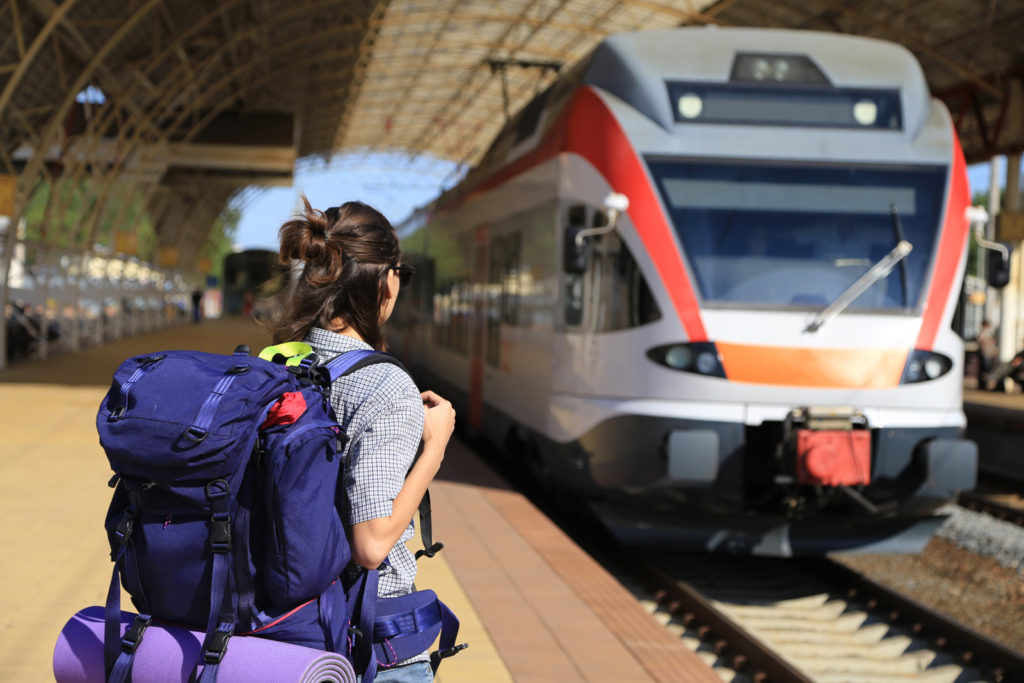
The concept comes from the program Galicia a todo tren, carried out by the Xunta de Galicia and the RENFE. The purpose of this program is to combine tourism in Galicia with “luxury” travel by train. There are several type of offers, each dedicated to a destination or a theme.
In 2015, the first Tren del Peregrino was launched. It works like a stay in a moving hotel. Passengers enjoy a cabin with private bathroom, breakfast is included and days are spent on day trips. Stages of the Camino are proposed among other various activities.
The train’s itinerary and the Caminos vary from time to time. The first editions left from Madrid, with stages on the Caminos Francés and Portugués. The most recent departures are from Oviedo and propose stages on the Camino Inglés.
Originally, the stages only allowed passengers to get a visit certificate at the cathedral. They are now designed so that pilgrims can be eligible for the Compostela.
Even if it suffered from the pandemic in 2020 and 2021, the Tren del Peregrino still exists! A strange way to do the Camino… but a way nevertheless! So why not spend part of your next pilgrimage on rail?
Tempted by a Camino by train?
Learn more about it here: Tren del Peregino
6. Camino without Santiago
Finally, here’s a Camino de Santiago… that doesn’t even go to Santiago! Well, I promised you unusual stuff, didn’t I? Let’s head to the tropics, to the Camino de Gran Canaria!
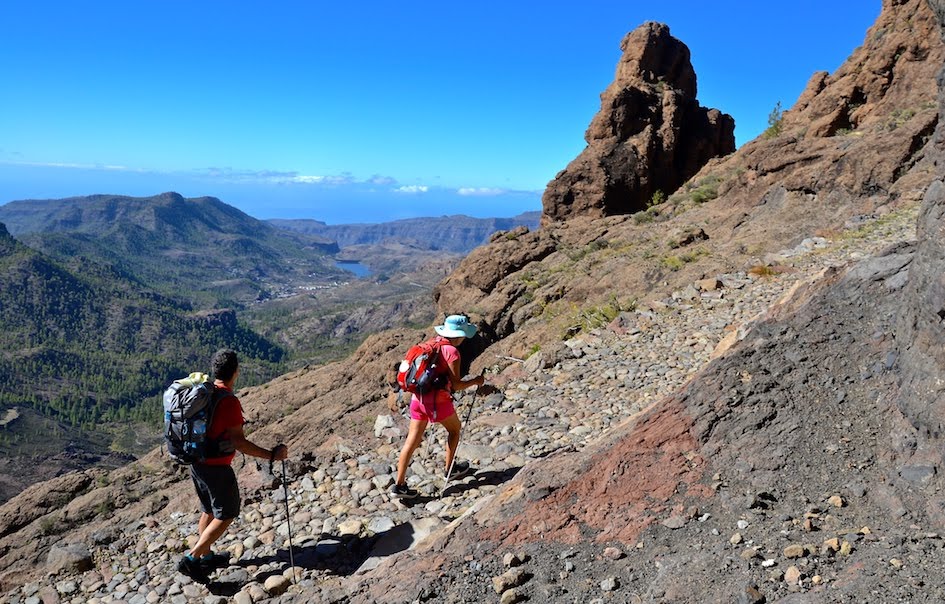
Photo: 🙏 Blog El Camino de Santiago desde Asturias
The first time I heard about a Camino de Santiago in the Canary Islands, I thought it was ridiculous. New sections of Caminos are invented all the time, yeah, well… But on an island so far from Santiago, come on! (Did I say to myself)
And then, curious as I am, I did some research. Of course, guess what? Santiago in Gran Canaria actually has deep historical roots!
The presence of a cult of St. James in the Canary Islands dates back to the Middle Ages. The legend describes a Spanish ship caught in a storm and its crew saved by the mercy of Santiago. True or not, what is certain is, the cult of St. James was established as the Spanish arrived in the archipelago. Fom there, it only grew stronger throughout centuries!
In the 20th century, the revival of the pilgrimage to Santiago in Europe also reached the Canary Islands. Its main sanctuary dedicated to St. James, the church of Santiago de los Caballeros, received from the Popes the right to celebrate the Jacobean years with the same privileges as Santiago de Compostela (plenary indulgences).
The Camino de Gran Canaria is the fruit of all this History… Officially recognized as a “Camino de Santiago”, it crosses the island from south to north. The itinerary is up to ~75 km (~46 miles) long with a significant difference in altitude. It’s often suggested to walk it in 3 stages, but it’s possible to cut the route differently!
The official path was determined in 2020 only, so the Camino is still in development. The marking is not finished yet and may be absent on certain sections. Moreover, there are no pilgrim hostels (yet). No need to worry though! There are good maps and GPX tracks and a fair number of touristic accommodations available to pilgrims.
Just like with the Caminos in Europe, pilgrims in Gran Canaria can use a credential and stamp it during their journey to receive a certificate of completion. For those who don’t set out for religious or spiritual purposes, the credential is replaced by a “Hiker’s Logbook”.
Tempted by the Camino de Gran Canaria?
Learn more about it here: Jacobeo Galdar ~ Senderismo de Gran Canaria
Bonus: Camino… without Camino
Hey hey, congratulations! You made it all the way 😉 A last curiosity for the road?
After the Camino that didn’t go to Santiago, here we are, doing a Camino without doing the Camino! Because yes, it’s really possible, it’s then a Camino by proxy.
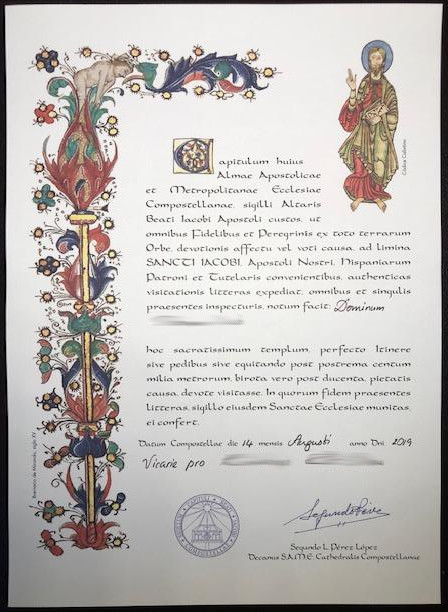
In some cases, there’s nothing funny about it… It’s possible for a pilgrim to do the Camino in the name of someone else, if the person is dead or ill, for example. This intention is officially recognized by the cathedral of Santiago.
Contrary to the movie The Way, the Compostela can’t be issued in the name of a person who is not present. The name that’s written on the Compostela is the one of the pilgrim who made the pilgrimage. In the case of a Camino by proxy, a special mention is added: “Vicarie pro + the name of the person”. Vicarie pro is simply Latin for “in the name of” or “on behalf of”.
Some pilgrims also do this for institutions or associations. The name added in this case is the one of the organization they walked for.
A less gloomy touch to finish! Did you know that pilgrimage by proxy was very common in the past? Since the Middle Ages, some people decided to send someone else to do the pilgrimage in their place. This way, many pilgrims were actually paid to go to Santiago for someone else’s benefit.
A dream job, right? Earning a living by doing the Camino! Well, surprisingly enough, it still exists today. Not very often, but still!
Tempted to dedicate your Camino to someone else?
(or… to send another in your place??? 😉 )
What do you think of all of these unusual Caminos?
How many of the options above did you know about? Are you tempted to go by one of those means? Or maybe have you done it already?
Tell us in the comments! 🙂

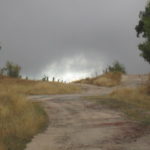


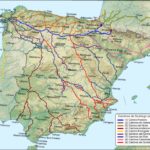
Hi There,
I have just completed the French way with my wife and am considering for next year to kayak from my home in Jersey CI to the north west of Spain, and walk from Ferrol to Santiago. How does it work with the credentials along the route?
Is there enough accommodation in ports and marinas or is camping along this route advisable?
Hi John 🙂 What a nice project! Modern maritime Caminos are very new, they have minimal organization. Also keep in mind that they are originally designed for boats, not kayaks: you will have to adjust your organization and double-check information to make it work for your project, for example to make sure of where/how to moor your kayak at every stage.
The North Marinas Association, with El Camino a Vela, brought together some ports to create a maritime Camino route along the coasts of western France and northern Spain that is acknowledged by the Pilgrim Office in Santiago. The first port on your way will be La Rochelle, the rest of them are in Spain.
The Camino Inglés between Ferrol and Santiago is enough by itself to earn you a Compostela as a pedestrian pilgrim (regular credential rules, 2 stamps/day). To earn recognition for your maritime Camino however, you’ll also have to give proof that you have sailed a minimum of 100 nautical miles. You can do that by collecting 1 stamp/day along the rest of your pilgrimage like on any Camino, among which stamps from the ports listed by North Marina/Camino a Vela (see the website).
There are no specific pilgrim accommodations for sailing pilgrims. You’ll mostly have to organize your pilgrimage and stages with normal touristic accommodations that you can find along your way, with regular travel tools like Booking/AirBnB/etc.. You’ll only have access to pilgrim accommodations when your route actually meets an existing land Camino. Expect very little pilgrim amenities along the French coast, as the French Caminos are more often inland than on the coast (in France, each département tends to their own stretch of Camino: you can check local Camino societies along the Atlantic coast and their relevant information here). Once in Spain, you’ll fairly often cross path with the Camino del Norte and there, have access to its pilgrim accommodations. Any Camino del Norte resources can work to help you plan!
About camping, there would be a good number of camping grounds along both French and Spanish coasts… but I’m guessing you meant “wild camping”. Legally speaking, it’s tricky. France doesn’t allow free camping by the seaside so at best you’d have to go inland… and hope no local bans apply where you settle. Spain is a big mess when it comes to camping but seaside is generally off-limits too, while both Cantabria and Asturias apply a very strict ban on free camping.
I hope I could help you a bit 🙂 I’d also be very interested in following your kayak Camino! Ultreïa!